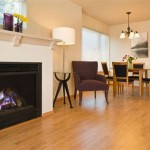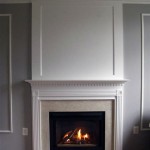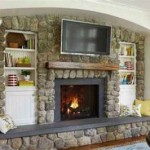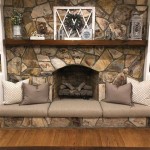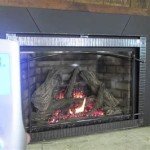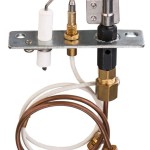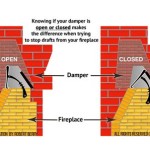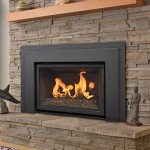Adding a Gas Fireplace to Your Home
The addition of a fireplace can significantly enhance the ambiance and value of a dwelling. While traditional wood-burning fireplaces possess a certain charm, gas fireplaces offer convenience, efficiency, and ease of use. Integrating a new gas fireplace into a residence requires careful planning and adherence to safety regulations. This article outlines the essential steps involved in such a project.
Before commencing any work, a thorough assessment of the existing structure is crucial. This involves evaluating the structural integrity of the wall where the fireplace will be situated, determining the availability of gas and electrical lines, and confirming compliance with local building codes. Neglecting this preliminary assessment can lead to costly complications later in the installation process.
Obtaining the necessary permits is a non-negotiable step. Contact the local building department to ascertain specific requirements for gas fireplace installations. These requirements may include inspections of gas line connections, venting systems, and electrical wiring. Failure to acquire the appropriate permits can result in fines and mandatory removal of the installed appliance.
Selecting an Appropriate Gas Fireplace Unit
The marketplace presents a diverse range of gas fireplaces, each with unique features and specifications. Direct-vent, vent-free, and B-vent models are among the common types. Direct-vent fireplaces draw combustion air from the outside and exhaust directly outdoors, making them a safe and efficient choice. Vent-free fireplaces, while convenient, require adequate ventilation to prevent the buildup of carbon monoxide. B-vent fireplaces utilize existing chimneys, but these chimneys must be in good condition and properly sized for the new appliance.
When selecting a gas fireplace, it is important to consider the heating capacity of the unit. This is typically measured in British Thermal Units (BTUs). A fireplace with too low a BTU rating will not adequately heat the intended space, while an oversized unit can lead to uncomfortable overheating. A qualified HVAC professional can assist in determining the appropriate BTU rating based on the room's size, insulation, and climate.
Aesthetics are also a key consideration. Gas fireplaces are available in various styles, from traditional log sets to contemporary glass media designs. They can be incorporated into custom-built mantels and surrounds to complement the existing décor of the home. Choosing a style that aligns with the overall design aesthetic of the house is crucial for a cohesive and visually appealing result.
Examining the energy efficiency rating of the gas fireplace is also essential. Higher efficiency ratings translate to lower operating costs and reduced environmental impact. Look for models with features such as electronic ignition and programmable thermostats, which can further enhance energy savings.
Preparing the Installation Site
Preparing the installation site entails creating a suitable opening in the wall or framing a new structure to accommodate the fireplace unit. The dimensions of the opening must precisely match the manufacturer's specifications. Improper sizing can result in installation difficulties and potential safety hazards.
Before any demolition or construction work begins, it is imperative to disconnect electrical circuits and shut off the gas supply to the area. These steps are essential to prevent electrical shock or gas leaks, which can pose serious risks to safety. It is advisable to engage a licensed electrician and gas fitter to perform these tasks.
If structural modifications are necessary, ensure that the work is carried out by a qualified contractor who is familiar with local building codes. Reinforcing the wall or adding additional framing may be required to support the weight of the fireplace unit. Proper structural support is critical for the long-term stability and safety of the installation.
Protecting the surrounding area from dust and debris is important. Cover furniture and flooring with drop cloths or plastic sheeting. This will minimize cleanup efforts and prevent damage to existing finishes. Consider using a dust collection system to further mitigate the spread of airborne particles.
Installing the Gas Line and Venting System
The installation of the gas line is a critical step that must be performed by a licensed gas fitter. Gas lines must be properly sized and installed in accordance with local codes. Using the wrong type of pipe or fittings can create a significant safety hazard.
Gas leaks are a serious concern. After the gas line has been connected, it is essential to test for leaks using a gas leak detector or a soap-and-water solution. Any leaks must be promptly repaired before proceeding with the installation. Regular inspections of the gas line are recommended to ensure ongoing safety.
The venting system is equally important. Direct-vent fireplaces require the installation of a specific venting system that is designed for the unit. The venting system must be properly sized and installed to ensure proper combustion and exhaust of gases. Improper venting can lead to carbon monoxide buildup, which is a deadly hazard.
Vent-free fireplaces do not require venting, but they do require adequate ventilation in the room where they are installed. This may involve opening windows or installing a ventilation fan. Monitoring carbon monoxide levels is crucial when using vent-free fireplaces. A carbon monoxide detector should be installed in the vicinity of the fireplace.
B-vent fireplaces utilize existing chimneys, but the chimney must be inspected and cleaned before installing the new appliance. A chimney sweep can assess the condition of the chimney and remove any obstructions. The chimney must also be properly sized for the new appliance to ensure adequate draft.
Connecting Electrical Components and Finishing the Installation
Many gas fireplaces require electrical connections for features such as electronic ignition, blowers, and remote control systems. A licensed electrician should perform all electrical work to ensure compliance with electrical codes. Incorrect wiring can create a fire hazard or damage the appliance.
Follow the manufacturer's instructions carefully when connecting electrical components. Pay close attention to polarity and grounding requirements. Use appropriate wire gauges and connectors to ensure a safe and reliable electrical connection.
Once the gas line, venting system, and electrical components have been installed, the fireplace unit can be secured in place. Use appropriate fasteners and shims to ensure that the unit is level and stable. Follow the manufacturer's instructions for securing the unit to the wall or framing.
The final step involves finishing the installation by installing a mantel, surround, or other decorative elements. These elements should be installed in accordance with the manufacturer's specifications and local building codes. Ensure that there is adequate clearance between the fireplace unit and any combustible materials.
A thorough inspection of the completed installation is essential. Check all connections for leaks, ensure that the venting system is properly installed, and verify that the electrical components are functioning correctly. A qualified inspector can provide an objective assessment of the installation and identify any potential issues.
Prior to initial use, carefully review the manufacturer's operating instructions. Understand how to properly ignite and extinguish the fireplace, adjust the flame height, and operate any additional features. Familiarize oneself with safety precautions and maintenance requirements. Proper operation and maintenance are essential for ensuring the long-term safety and efficiency of the gas fireplace.
Regularly inspect the gas fireplace for any signs of damage or deterioration. Check the venting system for obstructions, clean the glass panel, and inspect the gas line for leaks. Address any issues promptly to prevent more serious problems from developing. A well-maintained gas fireplace will provide years of reliable and efficient heating.

How To Install A Gas Fireplace Framing Finishing Tylynn M

How To Install A Gas Fireplace With Tile Surround And Wood Mantel Sima Spaces

How To Install A Gas Fireplace Diy Built In

Considering A Ventless Gas Fireplace Here S What You Need To Know Bob Vila

What Does It Cost To Install A Fireplace Vs Wood Stove Stamford Fireplaces

Fireplace In Your Bathroom Or Kitchen Install Ny

Install A Linear Gas Fireplace In Your Home Jetmaster Vic
.aspx?strip=all)
Fireplaces That Work Without Power Be Storm Ready With Regency

Gas Fireplace Install And Repair Trs

Convert Gas Fireplace To Wood
Related Posts

